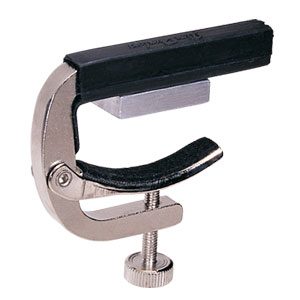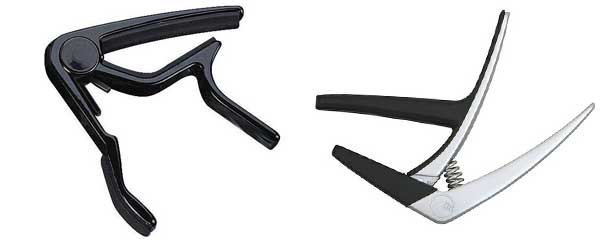- Home
- Instruments
- Gear
- Recording
- Lessons
- Reviews
- Blog

Playing guitar is not only limited to using a pick or your fingers. There is a whole bunch of accessories that were developed to increase the versatility of guitar or any other instrument for that matter. We are talking about stuff like slides and similar accessories.
 Guitar capos are probably one of the most popular accessories of that kind. A lot of people use capos every day, and a lot of artists wrote some of their best songs with capos in mind. With all that said, what is a guitar capo? Today we are going to answer this question and talk about some of the most popular ways to use a capo.
Guitar capos are probably one of the most popular accessories of that kind. A lot of people use capos every day, and a lot of artists wrote some of their best songs with capos in mind. With all that said, what is a guitar capo? Today we are going to answer this question and talk about some of the most popular ways to use a capo.
As you’ll see when we get deeper into the subject, capos have the power to expand the limits of your guitar in a way that would otherwise be impossible to achieve. It’s a powerful little tool that is well worth your attention. In the next passage, we will talk about how guitar capos work, and give you some tips we think are valuable.

A capo is a small mechanical device that is installed on the neck of stringed instruments. The purpose of doing this is to shorten the scale of the neck, which in turn increases the default pitch of a guitar. If you are wondering what could possibly be achieved by shortening the scale of a guitar, there’s one great benefit that makes it worth the effort.
When you put a capo, usually on the 3rd or 5th fret of the fretboard, it brings what would otherwise be open string pitch, a couple of frets up. With this setup, instead of playing some advanced chord shapes in standard tuning, you can play standard chord positions and still get that increased pitch.
Capos are most popular with flamenco guitar and various styles of folk music. Over time, its use spread across various genres of modern music and is often times applied to modern day pop songs.
On a practical level, capos are mostly used on acoustic guitars. Not that they don’t work on electrics, but their application is more valuable on acoustic instruments in general. You will see a lot of artists write songs that require capos, since it’s easier to just install one on the neck of an acoustic guitar than it is to change the whole tuning.
There are several different types of guitar capos. The main difference between these is the mechanism used to apply pressure to the strings. For a capo to be good, it needs to apply equal amounts of pressure at all times on all six strings.
Achieving this is actually much harder than it sounds. If you think about it, there are many different kinds of guitar necks. Various neck profiles will require different capos, and so on. If you want to learn more about different types of guitar capos, check out our article here ‘Types Of Guitar Capos’.
In general, a capo allows you to experiment with different styles and tones. If you want to introduce some change in your daily routine, adding a capo will definitely spice things up. For more casual purposes, almost any capo will work just fine. If you require a more reliable performance, expect to pay a bit more money. Capos capable of applying a constant amount of pressure over longer periods of time tend to come with more expensive price tags.
Capos are definitely a great tool that every guitar player should have. They allow you to do some pretty interesting things on a guitar and are often that missing piece of a puzzle which differentiates a good song from a great one. Since an average capo is more than affordable, getting one shouldn’t be an issue for most guitar players.
On the other hand, the benefits you get make this investment worth it in every possible way. One thing we recommend you do if you decide to go shopping for a capo is to find out the exact type guitar neck your guitar has. Capos that are cheap don’t really work with every guitar neck profile. That’s why you’d probably want to find one that works for your specific guitar model.
With all this stuff out of the way, feel free to check out our list of Best Guitar Capos on the market today.

Reader Interactions